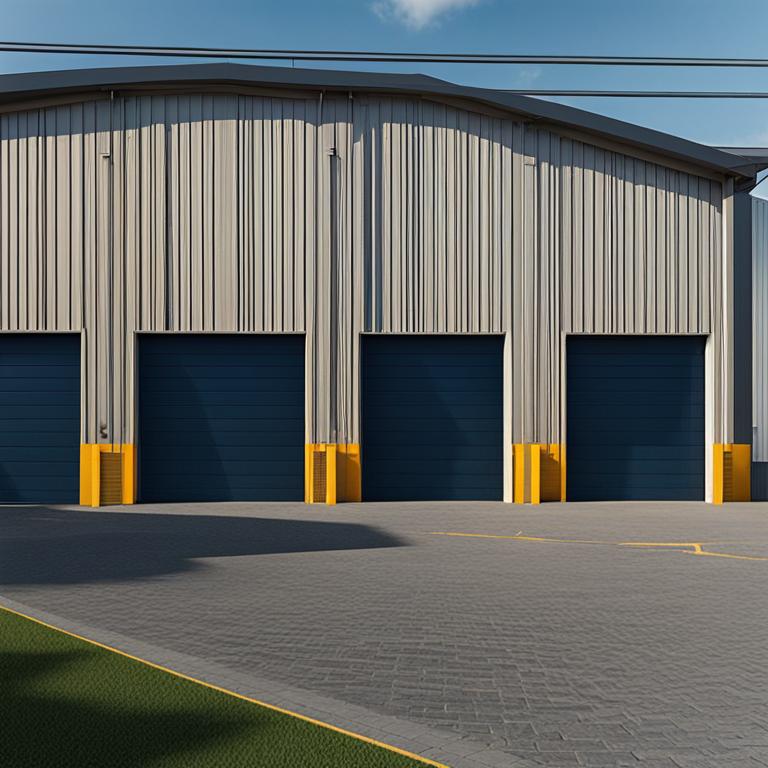How Warehouse Design Can Improve Employee Safety
April 15, 2025

In a warehouse, multiple employees work in different sections. Large trucks full of business products come and go from the warehouse. Besides, small-size forklifts run in the warehouse facility, loading and unloading business goods. Among all these activities, employee safety is essential. For example, if the floor design of a warehouse does not involve pavements for workers, accidents can happen anytime. If the emergency exit is not available, a fire accident can cause harm to employees. Besides improving employee safety, a well-designed warehouse can protect its equipment and vehicles. This can save large investments in the warehouse. In the following discussion, we will focus on how warehouse design can safeguard employees and protect assets in the facility.
Why Employee Safety Matters in Warehouse Environments
Among all other reasons, the regulatory reason for employee safety in the workplace is the most important. In the UK, the Work and Safety at Work Act is the primary legislation for employee safety in workplaces. It mandates that employers have a general duty to protect their employees and provide a safe work environment. In an industrial warehouse, there is always the risk of vehicle collision, secondary floors collapsing, and hazardous elements harming workers. So, you need to develop a proper plan to safeguard workers in the warehouse. Let's look at some warehouse designs that help ensure employee safety.
Key Design Features That Enhance Warehouse Safety
The warehouse's design should not restrict its natural workflow while protecting employees from possible accidents. Let's briefly discuss some of the design features.
Clear and Unobstructed Pathways
The warehouse floor design must have clear pathways so forklifts and employees can move around freely. Unobstructed pathways are also helpful for carrying goods from one end to another in the warehouse. You can also install high-visibility markings and warehouse signage for better mobility. Workers can easily navigate through the warehouse after following the signs.
Adequate Lighting
Proper lighting is mandatory as the warehouse will be full of business goods and materials. It helps workers move safely from one place to another and also protects them from sharp objects in the building. If hazardous material is stored inside the warehouse, proper lighting can help workers avoid impossible danger. Besides, the load-carrying vehicles will also be able to move safely in the warehouse.
Proper Racking and Storage Layout
The key to an advanced warehouse is properly planning its storage system. You can use modern racks to store the business goods and products. A vertical racking system is ideal for storing small to medium-sized box-shaped products. While long products like rods or steel pipes can be stored in a cantilever racking system. However, always be mindful not to overload the racking system. Otherwise, it might collapse under a heavy load and harm the workers.
Ventilation and Temperature Control
Multiple employees will work in the warehouse, which requires proper airflow. It can only be achieved through a high-quality ventilation system. Adequate ventilation in the warehouse will ensure employee productivity and performance. It will help reduce fatigue among employees after long hours of work. Proper airflow in the warehouse will also safeguard employees from developing health-related complications.
Fire Safety Features
You can further protect our safeguarding employees by installing sprinklers and fire extinguishers in the warehouse. In a fire accident, a fire extinguisher will come in handy. The sprinkler system installed in the warehouse facility will also help control the spread of fire before additional help arrives. You can also train your employees to use the emergency exit in an emergency. Marking these exits will also be helpful in a crisis.
Additional Design Tips
Dedicate a place for goods loading and unloading from inbound vehicles. Mark a clear pathway for the forklift to be removed from the unloading zone and moved to the storage facility. Install cameras in the house to monitor the facility from a single operation room. Additionally, you can install fire alarms, automated safety doors, an RFID tracking system, and robotics for better house management. Modern technology not only helps prevent human or material losses in the warehouse but also enhances the overall system.
Conclusion
A warehouse design ensures employee safety and improves its operational quality. Proper space for vehicles and workers ensures a smooth workflow and prevents accidents.